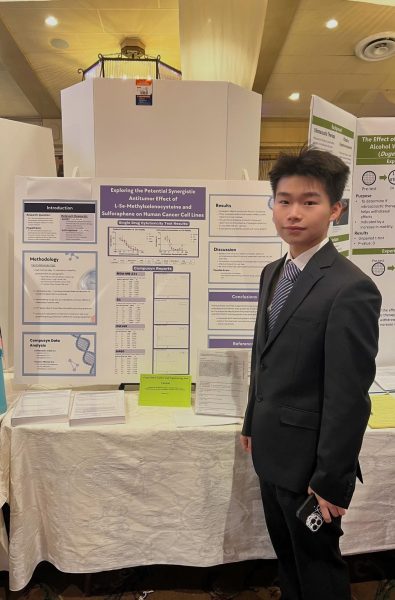Th1rteen R3asons Why: Devastatingly Beautiful
May 24, 2021
Th1rteen R3asons Why: Devastatingly Beautiful
By Hudson Hsieh
Doing an analysis of Thirteen Reasons Why has always been sitting at the back of my mind since the inception of my writing career for the Carle Place Middle school newspaper two years ago. The reason being, at the time I thought my writing skill at the time was not as developed. But now in 2021 I feel like I’ve progressed enough as a writer and critic to finally tackle one of the most decisive books written in the twenty-first century. I’ll do my best to dive into the allegory, controversy, and the philosophy of Thirteen Reasons Why.
*Quick disclaimer: This article will include mention suicide, sexual assault, and bullying. If any of the subjects listed above makes you uncomfortable, skip this review. I have so many other reviews that discuss various topics that don’t include mature themes.
Thirteen Reasons Why is considered a “banned book” meaning that a myriad of libraries and schools around America object to the content that a book may contain. As a result of the label, they may not permit the ownership of the book in it’s inventory. Furthermore, School officials and parents have actively protested against the book and television show, citing “irrevocable harm and should be pulled from the schools”. They argued that the book depiction of suicide and sexual harm might be too mature for students to handle at an adolescent/transitioning age. As a precaution if you want to read Thirteen Reasons Why, make sure it’s fine with your parents or guardian.
Depiction of Bullying
What I found extremely intriguing with this book in particular, was its depiction of bullying, but more specifically the nonexistent use of social media and cyberbullying as a form of persecution. Instead, the author Jay Asher decided to incorporate a gossip and rumor type of bullying.
This particular type of bullying enables Jay Asher to emanate the feeling to the reader that Hannah Baker is alone and doesn’t have anyone to depend on. The author’s purpose was to emphasize Hannah’s loneliness, by creating a unique atmosphere of sadness and isolation. It goes to represent how oppressive a large group of kids can become, especially if they aren’t able to provide the support the victim needs.
Jay Ahser demonstrates how prevalent bullying is solved, because it’s hard to determine what to classify as harassing another student or just harmless teasing. The stereotypical bully is not as prevalent as they were during the 80’s or 90’s, because as the world evolved so has bullying.
13 Reasons Why grapples with this question of what is considered bullying. Even our narrator Clay questions some of the “bullying behaviors” that various kids do to Hannah. From his point of view, what some of the kids did to Hannah can be excused as a joke, but we as readers can tell that from Hannah’s perspective, she is hurt and insulted.
The book teaches us to be more aware and mindful of what we say to others. That the jokes that we make should not be at another’s expense, and to be respectful to others.
Judging Others
I also found this book a way for the author to express his opinion on our tendency as a society to judge others. This problem is exemplified in a school where teens are often quick to make assumptions about others before finding out more about them.
We as a society tend to try and fit into the larger community, and strive to feel accepted by our peers. This is the exact reason why trends such as fashion, music, movies, and even type of speech changes every few hundred years. The validations of fitting in often rewards us with a feeling of security and belonging. The drive and motivation to fit into a community is a significant factor when it comes to us making decisions.
School is inherently compares students in all metrics, because its goal is to find the selected kids who excel in all criteria. This type of competition-style system serves two purposes; it becomes a motivator for kids to succeed, and a way to effectively weed out the underachievers.
Identity
How students drive to present the best image often pushes them to become unrecognizable. One quote from Cassette 3 that best describes the situation is
“Yes my dear listeners, Courtney is nice to whomever she comes in contact with or whomever she’s talking to. And yet, ask yourself- is it all a show?..Because when you’re posed you know someone is watching. You put on your very best smile. You let your sweetest personality shine through.. And in high school, people are always watching so there’s always a reason to pose.. I don’t think you do this intentionally, Courtney. And that’s why I put you on these tapes. To let you know that what you do affects others. More specifically, it affected me.”
This quote perfectly explains the underlying theme of this book: finding your own identity. We know through the tapes that Hannah Baker is a much kinder, more honest, and more genuine person than Courtney ever was. But oftentimes in high school and society, we don’t reveal who we really are in front of other people. We hide our inner personality by putting up a mask that acts in a way that we think will make us fit in with others around us.
Especially in high school, where the students are still trying to find themselves among a large group of people. This, in conjunction with how schools encourage competition and categorization, leads to students labeling others. By writing Thirteen Reasons Why, Jay Asher teaches the audience that each person has more depth and complexities than their superficial “label”.
Also, this book demonstrates the importance of accepting who you are as a person. It tells you not to judge yourself, with the eyes of others and be comfortable with who you are. Most importantly, it tells you to not be afraid of what others think of you.
Distinct Assent
Throughout the story, the lines blur for Thirteen Reasons Why between young adult and adult. The author Jay Asher brings the realistic and gritty tone of a dystopian novella into the world of academia. Satirical undertones of real world issues are sprinkled throughout the book, and this only deepens the reader’s view on the themes explored. The real complexities of this book are not in its vocabulary or vigor, but instead in how the novel is able to convey a story filled with grief, anguish, and allegory.
Jay Asher drew sharp criticism from critics, for putting a suicide in a story that so many adolescents in the country could relate to. Never really before has suicide appeared in such a realistic setting and with the popularity that this book got. It made teens aware of a problem, they might have tried to ignore or forget before.
Conclusion
When I originally started to re-read 13 Reasons Why for this review almost a month ago (3/29/21 is the date) I never thought it would lead me down a rabbit hole of research exploring the psychology of teenagers, philosophy, and how humans functioned in general. It has been a blast re-reading one of my all time favorite books and being able to dig into the nitty gritty of the story. Jay Asher’s Thirteen Reasons tells a pensive story that is jam-packed with moments of heartbreak, suspense, and sorrow. That is why Thirteen Reasons Why is so illustrious.







